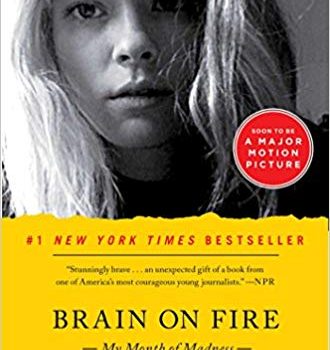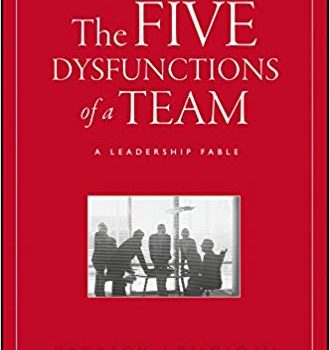Self-deception—our tendency to see the world around us in a distorted way—is a common personal and organizational problem. _Leadership and Self-Deception_ explains how self-deception derails personal relationships and keeps organizations and leaders from achieving the results they want. Instead of focusing on producing results, many leaders are trapped “in the box” of distorted thinking—they blame others to justify their own failures and can’t see how they themselves are a problem. They create the “people” problems that plague many organizations. Through a business fable, this book tells leaders how to get “out of the box”—but you don’t have to be a leader to use the principles to change your life and workplace.
#1 Book Summary: Hidden Figures, by Margot Lee Shetterly
_Hidden Figures_ tells the story of a group of African-American women who, over a period of over 25 years, made major contributions to the US space program. Working in the American South during the Civil Rights Era, they overcame both race- and gender-based discrimination to launch brilliant and storied careers as mathematicians and engineers. These women were the unsung protagonists who shaped America’s destiny, playing a major role in the great drama of the nation’s history.
#1 Book Summary: First Things First, by Stephen R. Covey
Do you feel like there just aren’t enough hours in the day? That you’re constantly checking things off your to-do list but still don’t have enough time for the important things? **Your problem might be that you’re working efficiently, but not effectively.**
In _First Things First, _Stephen R. Covey, author of _The 7 Habits of Highly Effective People, _presents a time-management approach that focuses on priorities, or “first things.” This approach teaches you to use your time effectively, meaning you focus more on _what_ you’re spending your time on than _how much time_ your spending. Learn how to identify your priorities; schedule your time at the daily and weekly levels; and find win-win opportunities among people.
#1 Book Summary: Educated, by Tara Westover
_Educated: A Memoir_ is Tara Westover’s autobiography. In it, she shows us her transformation from being the daughter of survivalist, fundamentalist, anti-science, anti-medicine, and anti-education parents, to becoming a Cambridge-educated historian. Westover gains the strength to break free from the ideological chains of her youth and discovers the agency to make her own choices about how she sees and experiences the world.
While it is about one individual’s journey, _Educated_ speaks to universal themes of self-liberation, the power of education, the perils of extreme ideology, and the trauma of domestic abuse.
David and Goliath Book Summary, by Malcolm Gladwell
In _David and Goliath_, Malcolm Gladwell argues that what we often think of as disadvantages may actually be advantages, and that advantages of goliaths may turn into disadvantages. Gladwell shows us that underdog victories are less miraculous (and more achievable) than they seem, and sheds light on how we can reinterpret our own weaknesses to locate new sources of power.
Brain on Fire Book Summary, by Susannah Cahalan

At the age of 24, _New York Post_ reporter Susannah Cahalan is stricken with a terrible disease. In a matter of weeks, it morphs from paranoia into hallucinations, seizures, and psychosis. It resists diagnosis even by the most prestigious doctors in the US. Only when Susannah becomes catatonic, staring death in the face, do two brilliant neurologists discover the problem: Susannah is suffering from an autoimmune disease that’s causing her antibodies to attack her own brain.
Cahalan’s harrowing portrait shows how frail disease makes us, ready to accept any diagnosis, even when we know it’s wrong; how the US healthcare system serves some patients better than others; and how maintaining a positive attitude is critical to recovery.
#1 Book Summary: The Immortal Life of Henrietta Lacks, by Rebecca Skloot
In 1951, a 30-year-old African-American woman named Henrietta Lacks entered Johns Hopkins Hospital to be treated for cervical cancer. In a matter of months she was dead, overcome by her cancer’s malignancy. Her cancer _cells_, however, would prove immortal—and change medicine forever.
_The Immortal Life of Henrietta Lacks_ tells the story of Henrietta, her family, and her incredible cells. Tracking both the scientific advances owed to “HeLa” cells and the struggles of Henrietta’s descendants, author Rebecca Skloot leads readers through the history of cell research, the ethical implications of scientific study, and the human story of a poor and ailing family whose matriarch contributed to some of 20th-century science’s greatest achievements.
The Hiding Place Book Summary, by Corrie ten Boom (archive)
_The Hiding Place_ is an autobiographical memoir by Corrie ten Boom, a devoutly religious woman who lived in the Holland city of Haarlem during the Nazi occupation. Compelled by her unshakeable Christian morality, she defied tyranny to rescue her Jewish neighbors who faced annihilation during the Holocaust. She was ultimately caught and sent to the notorious Ravensbruck death camp, where she witnessed scenes of unimaginable cruelty. In the camp, it was Corrie’s bedrock faith in the glory of God that sustained her. She discovered that love was a far more powerful force than hate—for God’s love was truly unconquerable.
#1 Book Summary: The Glass Castle, by Jeannette Walls
_The Glass Castle_ is the harrowing tale of Jeannette Wall’s life growing up in poverty with wayward parents. Jeannette and her siblings were often left to fend for themselves as their parents engaged in alcoholic binges or flights of fancy. The siblings ultimately resented their parents’ neglect and became independent, moving far away.
Following the Walls family through the desert to the coal-mining region of West Virginia to the fast-paced life of New York City, this memoir explores the nature of family, loyalty, and tragedy and what it takes to survive together and apart.
#1 Book Summary: The Five Dysfunctions of a Team, by Patrick M. Lencioni

_The Five Dysfunctions of a Team: A Leadership Fable_ explores how teams fail to work cohesively together through a dynamic, five-part model of dysfunction. The five dysfunctions are 1) absence of trust, 2) fear of conflict, 3) lack of commitment, 4) avoidance of accountability, and 5) inattention to results. Through identifying these root causes of poor teamwork, teams can develop specific strategies for overcoming each of them. By doing this, they will become comfortable with one another, be willing to engage in constructive debate, achieve clarity and buy-in around team priorities, hold one another to high standards, and focus on team results instead of individual ambition.